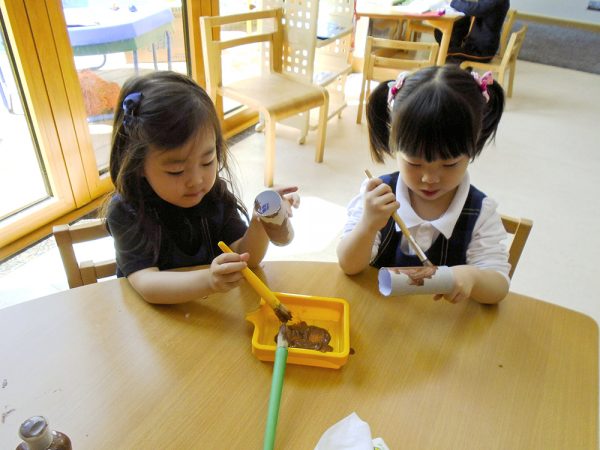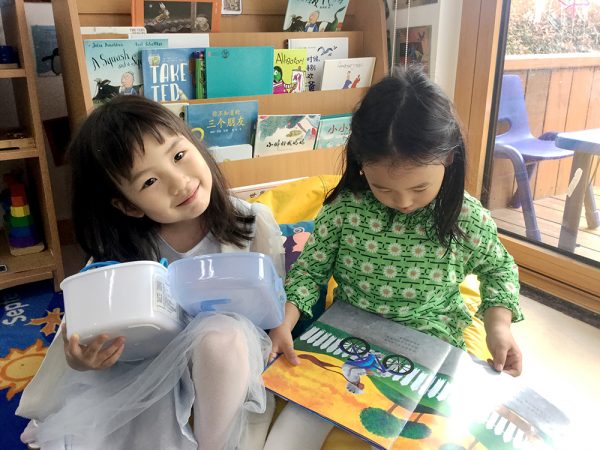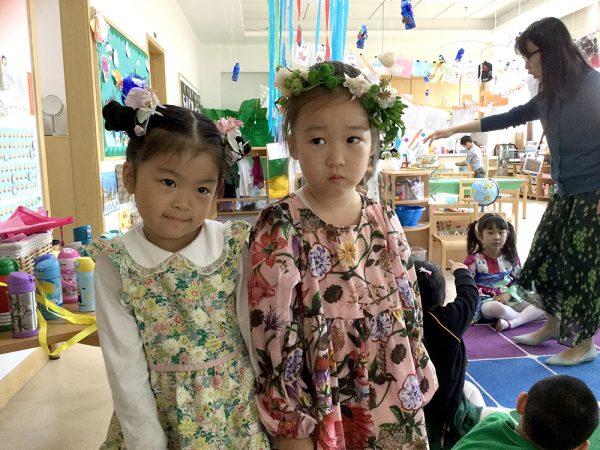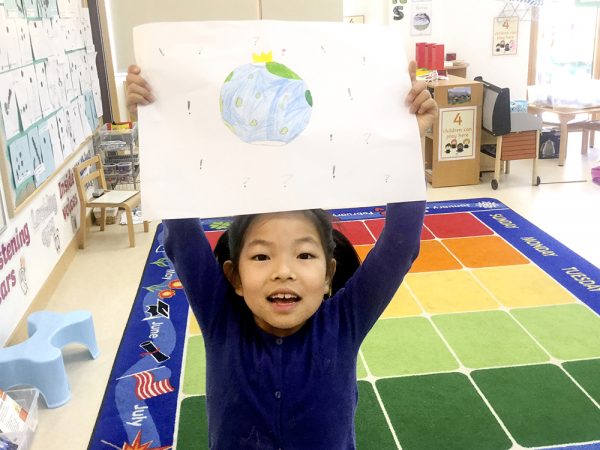The origin of Earth Day
Earth Day falls on 22nd April every year. Its celebration has evolved into a global environmental protection event since 1970, when Gaylord Nelson and Denis Hayes started the fashion in the United States. From 1990s, China joined the trend too. The day’s celebrations are designed to call everyone’s attention to their responsibility to protect the planet we call home, to balance development and environmental conservation as well as to improve the environment we all live in.
So, how do we get involved on Earth Day at Wellington College Bilingual Shanghai early years?
Early Years 1

Goal: To learn the importance of recycling and have fun in turning unwanted items into something awesome.
EY1 teachers and children looked at pictures of tall buildings and discussed their characteristics. Following a visual demonstration and discussions, teachers encouraged children to put together their own buildings or other things they wanted to make by using old cardboard boxes and plastic bottles. Teaching staff also created games for children to practise sorting waste.
Early Years 2

Goal: To learn the effects of weather change on plant growth.
EY2 classes celebrated the Earth Day with activities that link to their current curriculum theme. Teachers encouraged children to talk about weather change, allowing them to explore the idea of the warmth of the sun, pretty flowers and new life that is associated with spring. The teaching team worked to inspire children’s curiosity about the life cycle of plants by providing opportunities for them to grow grass heads and fast-growing seeds. In the following weeks, they will encourage children to check the growth regularly and record it through taking pictures and drawing.
Early Years 3

Goal: To understand some basic ideas about environmental protection and the importance of taking care of the Earth as our home.
As EY3 children are obsessed with doing experiments and testing things out recently, a water filtration experiment was specially designed for them. They discussed how to sort waste and applied this knowledge in practice. Since EY3 classes are learning the theme of ‘sea’, children talked about how to protect the ocean as well as the animals and plants that live in it.
Early Years 4

Goal: To know the significance of conserving water and electricity and maintaining ecological balance.
EY4 children and staff wore green on Friday and they created their own ‘One Hour, No Power’ challenge, genuinely experiencing the need for conserving resources. Children did a sea pollution experiment and, through discussing and summarising it, shared their findings and opinions.
What can we do in everyday life?
Taking care of our planet and saving energy and resources begins with simple things. Our pupils have created images and signs of ‘Please save electricity’, ‘Please save water when washing your hands and flushing the toilet’ and ‘Please don’t waste paper’, hanging on the walls of corridors and toilets as polite reminders for everyone. Our bins have labels of ‘Trash’, ‘Paper’ and ‘Plastic’, offering opportunities for children to practise sorting waste in real circumstances. We encourage children to draw and write on printer paper if it has text on only one side and to make amazing items out of waste materials, such as empty bottles, cans, milk boxes and cloth. Recycling is not only for children, our teaching team implements it too, as they have made clever use of old, unwanted items in many outdoor activities.
In the spirit of Earth Day, we would like to ask all of you to join us in acting to protect the planet we all share.




